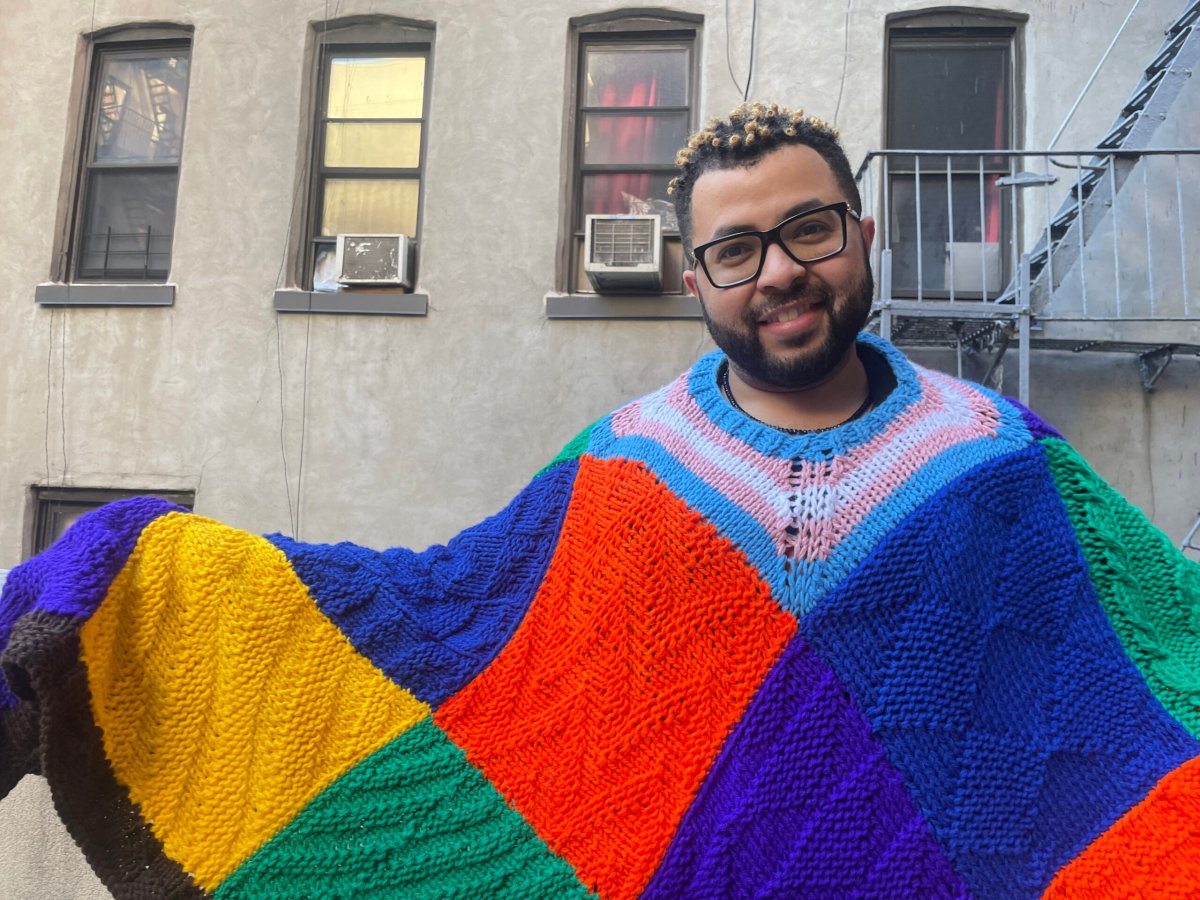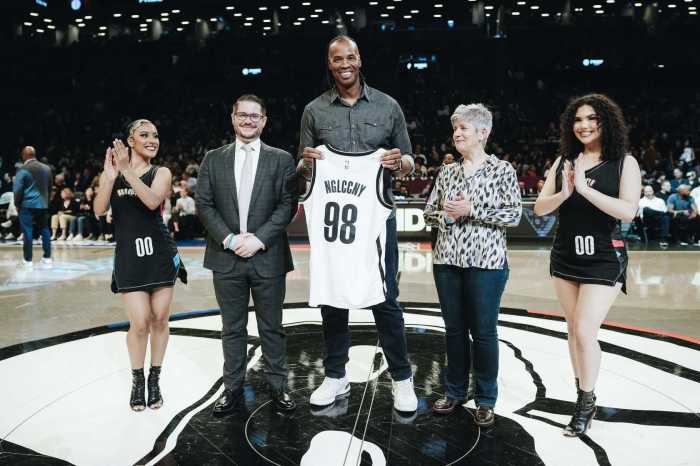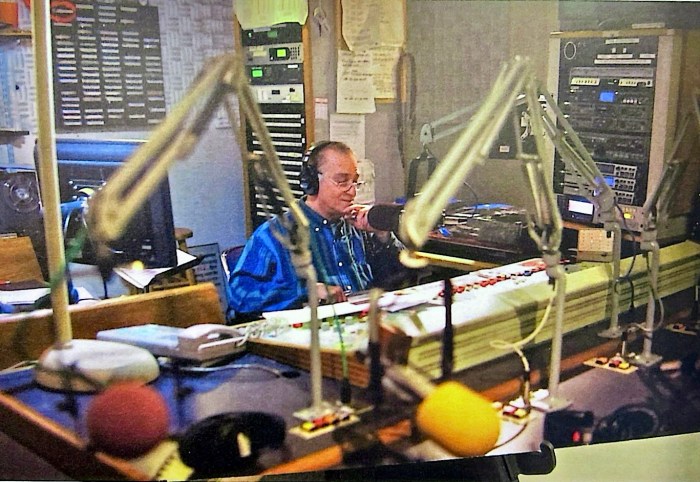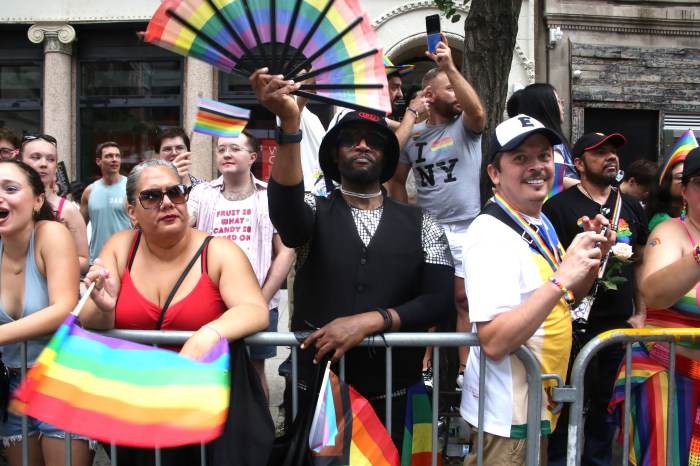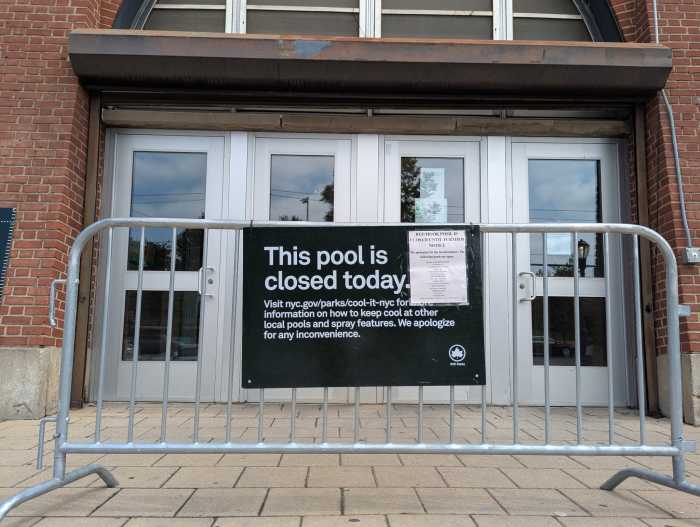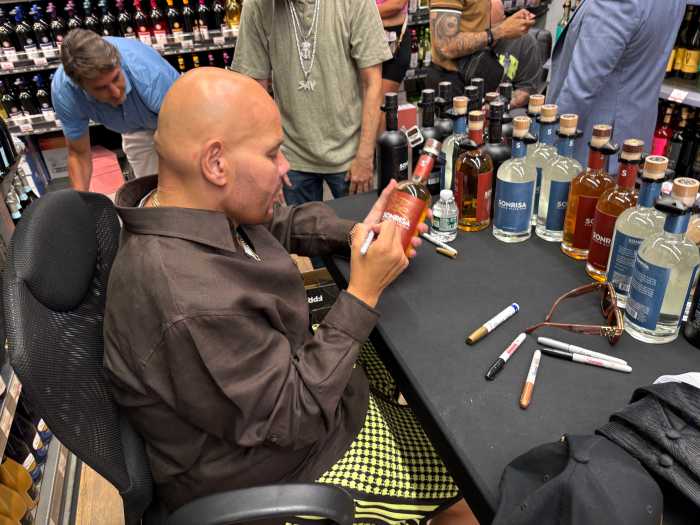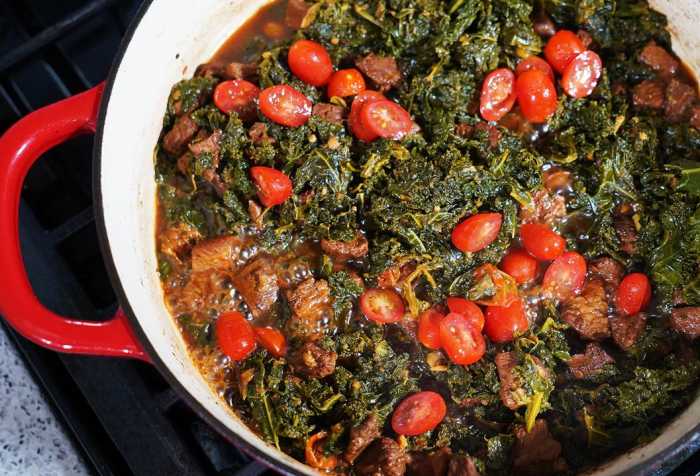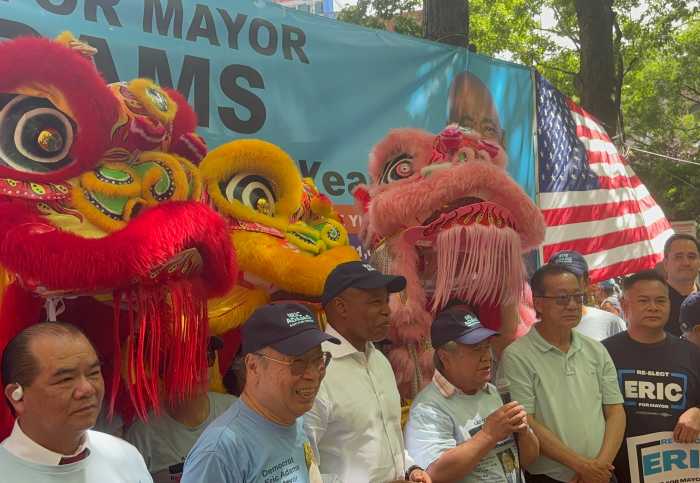Cardboard boxes filled with knitted and crocheted garments were piled high in the living room, bedroom, and in other corners of an Upper Manhattan apartment on Sunday, Feb. 4. Nine volunteers scurried about, meticulously sorting and counting the contents of each of the 87 boxes, which were donated from across New York City and the country. The volunteers packed over 3,000 items into categories such as hats, scarves, sweaters and socks.
Over the next two weeks, Austin Rivers, founder of the non-profit Knit the Rainbow, set out to drive a U-haul to community centers and service organizations across NYC and New Jersey to distribute the hand-made clothing. Rivers runs his non-profit, which he started in April 2020, out of his own apartment. The building’s doormen are accustomed to the constant flow of donations he receives daily during the winter season. Feb. 4 was this winter’s last “day of action,” which is when the items get sorted in a four-hour marathon.
Knit the Rainbow’s mission is to provide free, handmade clothing to homeless LGBTQ youth. The name, often shortened to KtR, is inspired by the many abbreviations that knitters and crocheters are familiar with when working within their patterns — k2tog (knit two stitches together), kfb (knit into the front and back of a stitch), and now knit the rainbow.

Rivers, 29, said he wanted to give back to his community, and after researching the disproportionately high levels of homelessness faced by queer youth, he put his own passion for fiber arts to work. The garments are largely donated by queer knitters and crocheters (and their allies), including the volunteers at Rivers’ house on the first Sunday of February.
“Being a gay Black person, I knew that LGBTQ+ youth who are Black and brown have a disproportionate amount of homelessness, so I wanted to help that community specifically,” Rivers said. “I knew how to knit, so I was like, I can start working on some stuff, see if I can get some friends to start working on some stuff … and here we are three-and-a-half years later.”
The atmosphere in the apartment was friendly and focused: Everyone was so concentrated on sorting that they barely had time to look up. Cyndi Lauper’s “Girls Just Want to Have Fun” played from a loudspeaker, fairy lights surrounded the walls, and a set of RuPaul’s Drag Race Monopoly rested underneath a table. In a corner sat a knitted rainbow hat and bowtie — both handmade by Rivers.
Rivers has short, bleached hair and carries out his work while donning a black jacket on top of a KtR t-shirt with a rainbow-colored hand holding two knitting needles. The shirt reads, in capital letters: KNIT. CROCHET. RESIST. REPEAT. Later he put on a rainbow shawl featuring colors of the Trans Flag in the center, which he received from Rose de Klerk, a nurse at Planned Parenthood and a volunteer at Knit the Rainbow.
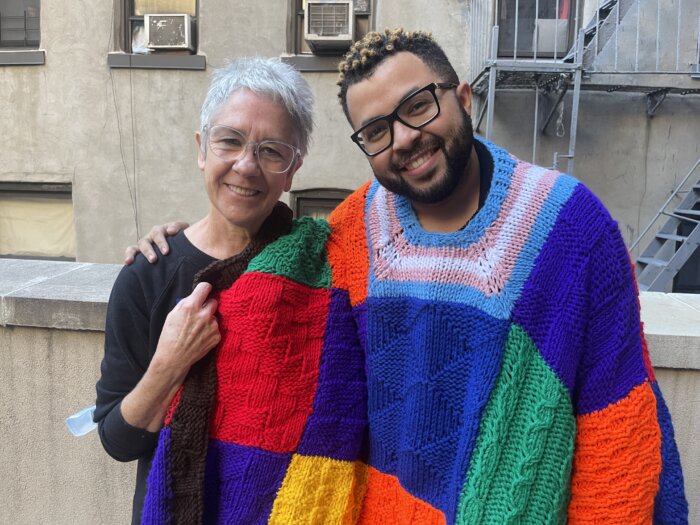
Fiber arts as ‘craftivism’
Crafters in 45 states drop off their knitted, crocheted, and woven garments at yarn stores or send them directly to River’s apartment. In some other cities, like Chicago and Detroit, the items are distributed to local organizations serving LGBTQ youth.
Rivers runs his non-profit while working full-time as a special assistant to the chief diversity officer at the Rockefeller Brothers Fund. He conceived KtR during the last semester of school as he worked towards his master’s degree in public administration at the start of the COVID-19 pandemic. He worked hard to form a board and launch publicly by Pride Month in 2020. The pandemic, in a sense, worked to his advantage, he said.
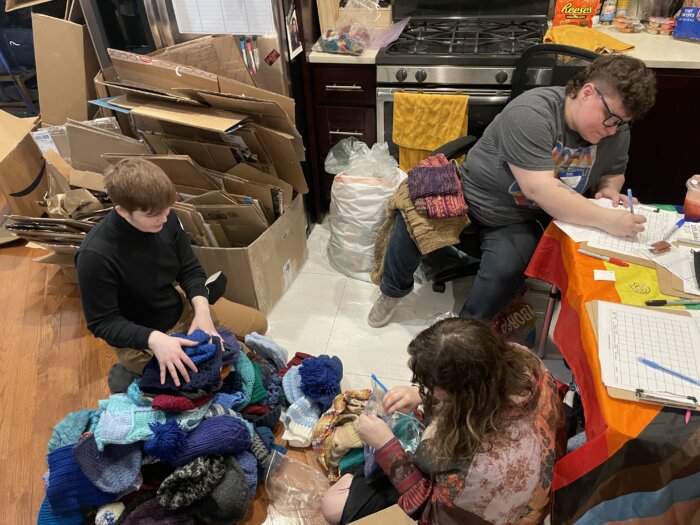
“Folks were home and looking for new hobbies to do, so the people that were already crafters were crafting a lot, and then there were tons of millennials and gen z folks who were learning how to craft, so we kind of used that as a way to spread the word about Knit the Rainbow,” he said.
Rivers said while KtR doesn’t address the root causes of LGBTQ homelessness, he hopes that by sharing homemade garments, he will succeed in sharing love with his community.
“A lot of people don’t get to receive a handmade item,” he said. He wants people to know “that there are literally thousands of volunteers around the country that are thinking about them and crafting just for them and their community.”
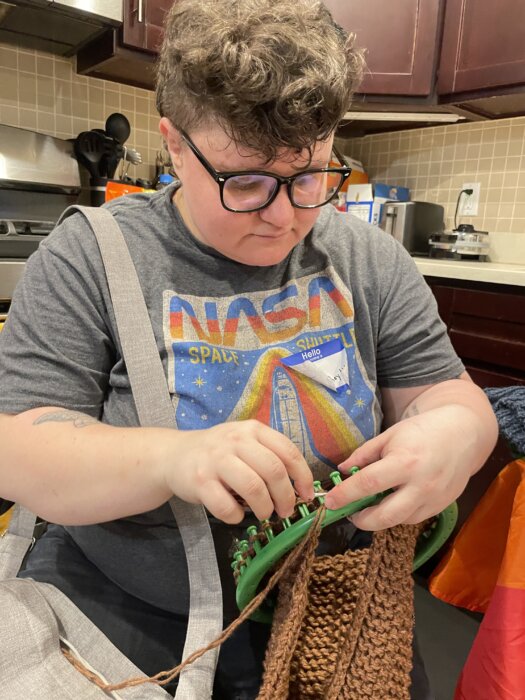
A double-major in musical theater and political science in college, Rivers has been an avid fiber artist since he learned how to knit in 2018. He was on a singing tour in Japan with Disney and needed something to occupy himself while riding the bullet train between cities.
“Fiber arts, for me, is a way to decompress,” he said. “It’s part of my mental health regiment — to sit down, pick up some needles, find that yarn that I love, and just craft.”
To Ceci Nelson-Hurt, one of KtR’s founding board members and a frequent visitor to yarn stores, donating homemade garments is “craftivism” — a combination of crafting and activism.
“I’m crafting because I know that it’s going to go to somebody who it actually makes a difference for,” she said. “The end receiver is going to wear it and know that they were thought of, and even if your family has abandoned you, there’s family out there, your chosen family, who loves you and is thinking about you.”
Finding purpose and community
Volunteers at River’s apartment said KtR has brought meaning and community to their lives.
Tee Hoida started volunteering two years ago to connect with the queer community after moving to the city. They knit on a loom and mainly make hats and scarfs.
Danielle Kingsbury, a ninth grade English teacher in the Bronx who works with her school’s Gay Straight Alliance, said Knit the Rainbow added purpose to her love of crocheting “because I really enjoy the act of crocheting but I don’t like the accumulation of objects.” She primarily crochets ear warmers because she heard it was one of the items least donated.
Some volunteers have deeply personal reasons for crafting. Riley Sloan has been knitting since her mother taught her when she was six. She’s been sending her garments to KtR since 2021.
“One of my very close friends was disowned because she was lesbian, and I’m here because I want to be here for everyone else,” Sloan said. Her family has a long history of crafting since her great grandmother immigrated to the United States and knitted for a living.
“I feel like I’ve found a lot of meaning in my life,” she said.
Today KtR operates out of New York City, Chicago and Detroit, and Rivers is hoping to add a new city every year. He’s also planning to apply for grants next year so the organizations can attend more events like Pride festivals and obtain an office space separate from his apartment.
To get involved with Knit the Rainbow, check out their website and Instagram for volunteer opportunities and to find a yarn store near you to drop off your own handmade clothes. There are no fiber or pattern restrictions, but if you’re looking for inspiration, KtR’s site has a list of suggested patterns.

